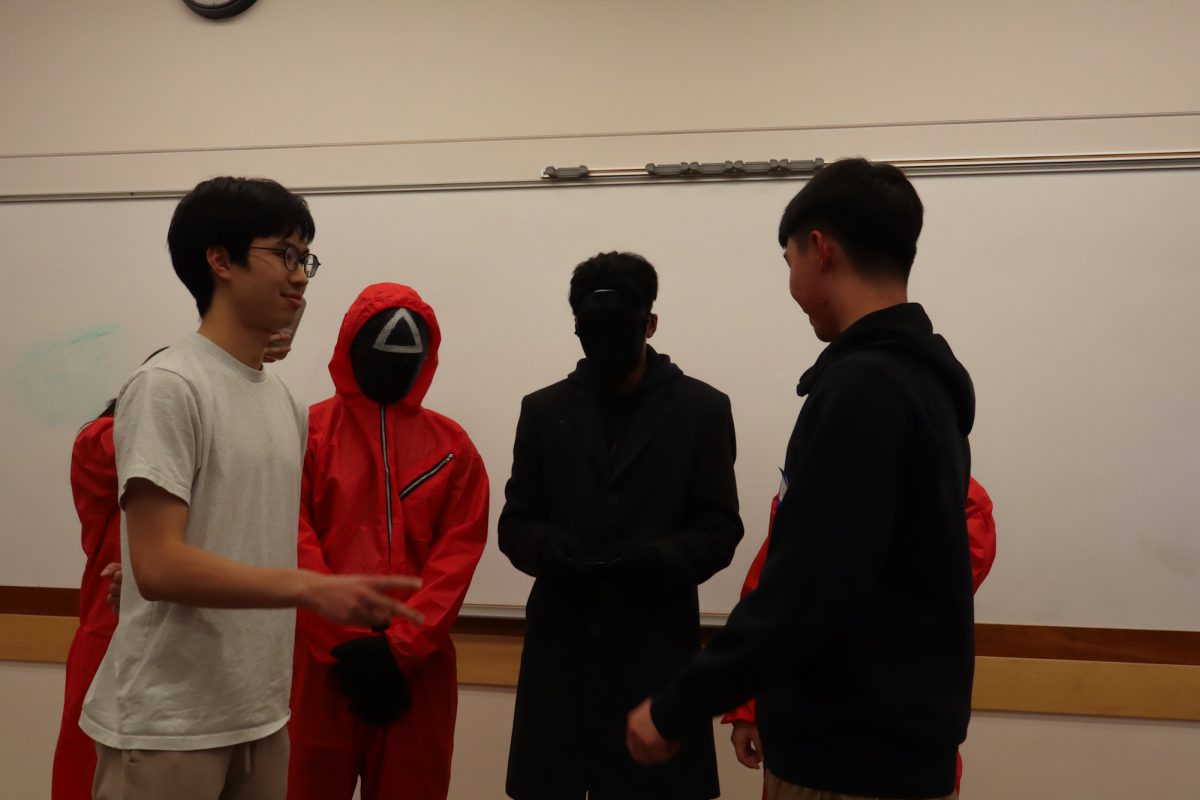Suicide prevention stressed at LGBTA program
November 10, 1997
Adolescence is a notoriously painful time for most people. For lesbian and gay teenagers, the humiliating taunts are not just directed at their appearance or who their family is, but at who they are.
Michelle Clark, Student Counseling psychologist, and Judd Harbin, Student Counseling Services psychology intern, presented a program on suicide prevention to the Lesbian, Gay, Bisexual, Transgender, Ally Alliance last week in the Cardinal Room of the Memorial Union. Nearly 30 people attended the presentation.
The program included statistics on how suicide affects the gay and lesbian community, and ways for friends to detect the warning signs and help prevent suicide.
Harbin stressed the higher rate of depression and suicide in the gay and lesbian community has nothing to do with their sexual orientation.
“There is nothing inherently [suicidal] with being gay or lesbian,” Harbin said. “It’s the societal treatment that creates the isolation [that can lead to suicide.]”
Harbin said he knew he and Clark were “preaching to the choir,” since suicide has been a topic that has long affected the gay and lesbian community. Many gays and lesbians already are well educated on the warning signs of suicide, he said.
“What we want is for you to be our eyes and ears,” Clark said. “Not everybody who is suicidal walks [around] with a big red flag that says, ‘Help me.'”
Harbin said suicide is a tough topic to discuss, since being stoic is a value in American society. But Clark noted almost 75 percent of all people have some type of suicidal thoughts in their lifetimes.
Facts about suicide
According to research done by the University of Minnesota, of 36,254 junior high and high school students in Minnesota who were used for the study, reports found gay students are seven times more likely to try and kill themselves than heterosexual students.
While only 4.2 percent of straight male students reported they had tried to commit suicide, 28 percent of gay male students reported they had attempted suicide.
According to the U.S. Department of Health and Human Services, 40 percent of the gay community who have tried to kill themselves will try again.
Males are more likely to kill themselves than women, but women are more likely to repeatedly attempt suicide, according to the department.
People are nine times more likely to commit suicide if they have a history of it in their family. Other risk factors include keeping a firearm in the house, ending a significant relationship, losing a job, losing a family member and abusing drugs or alcohol.
Harbin also said substance abuse is higher in the lesbian and gay community.
Warning Signs
Clark said there are not always warning signs for suicide, but some of the signs include withdrawal from regular activities or a recent “bounce back” from a bad spell. Often the “new and better” outlook on life does not last very long.
Other signs include allusions to suicide or feelings that “life is hopeless.” These allusions may come in the form of direct threats. This can also include mysterious comments about their life, or the person may start putting their financial and personal affairs in order. The person may develop a preoccupation with death.
Other biological signs may include rapid weight loss or gain, change in sleep patterns or insomnia and poor personal hygiene.
Harbin said there is a higher rate of eating disorders in gay men.
Action
Clark and Harbin agreed concerned friends should try to talk to potentially suicidal people and not to be afraid to use the word “suicide.” Clark said one of the biggest misconceptions about suicide is if somebody is thinking about suicide, he/she will do it no matter who tries to help.
A concerned friend should never leave a suicidal person alone in a time of crisis and should take the person seriously.
Ignoring the person’s pain is not the answer, Clark and Harbin said. Asking a person if they have a specific plan or means to commit suicide may also help assess how grave the situation is.
A concerned friend should never judge the potentially suicidal person.
Friends should never try to handle the situation by themselves, Clark and Harbin said. They also stressed no matter what the outcome of the situation is, the concerned friend is not at fault.
If a person is in extreme crisis, the friend should call 911 or another crisis line, or take the person to a hospital or crisis center. A friend could also help the person get to a counseling center, a psychologist or a family doctor.
Safe Havens
Student Counseling Services (294-4428) gives free and confidential counseling. Their offices are open Monday through Thursday, 8 a.m. to 6 p.m., and Friday 8 a.m. through 5 p.m.
Lesbian, Gay, Bisexual and Transgender Student Services (294-1020) provides support and referral for anyone with questions or concerns.
ACCESS (232-2303) provides temporary counseling for many forms of abuse, including battered homosexuals.
The Margaret Sloss Women’s Center (294-4154) provides referrals for gays and lesbians who need support.






